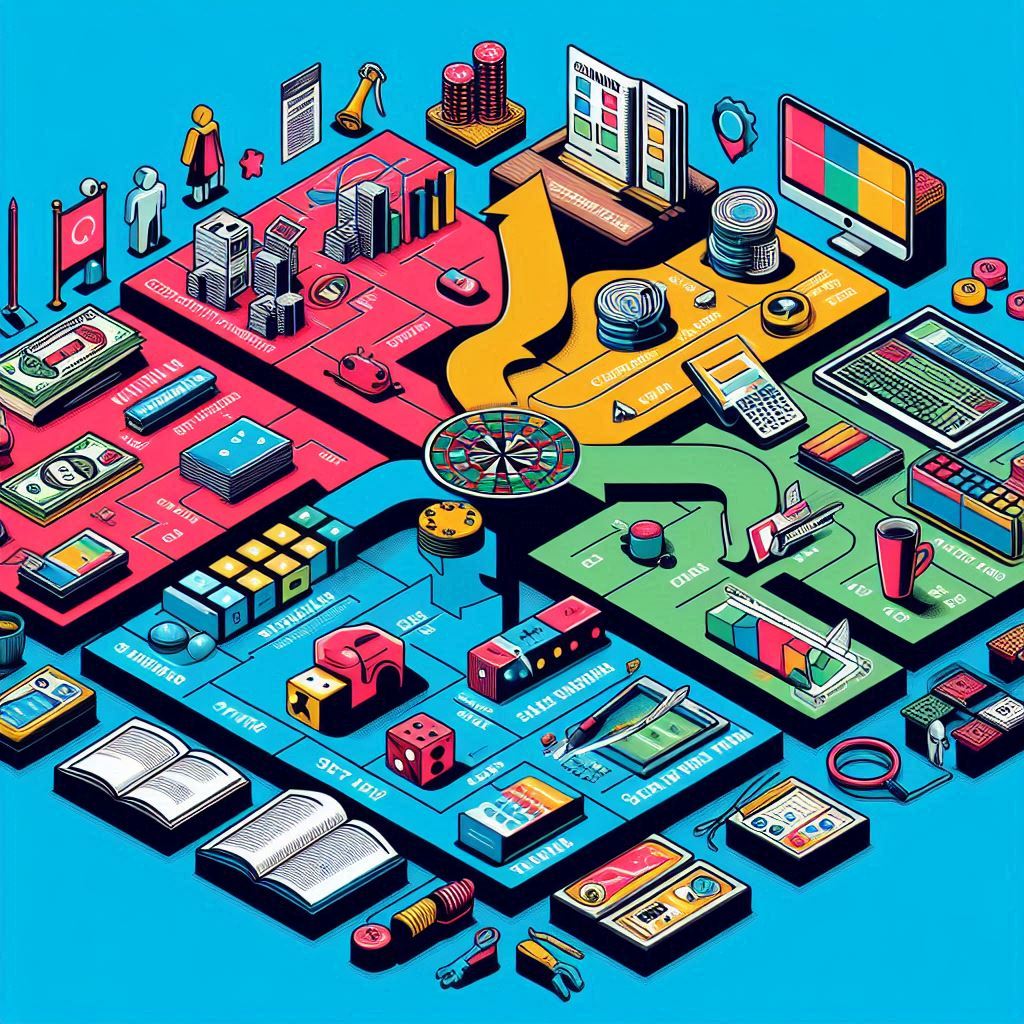Designing Success: The Importance of Architecture in Scenario Planning
When we think of designing for success, architecture may not be the first thing that comes to mind. However, in the world of scenario planning, the importance of architecture cannot be overlooked. The design of our physical spaces can have a significant impact on how we plan for the future. From the layout of buildings to the use of natural light, architecture plays a crucial role in creating environments that foster creativity, innovation, and adaptability.
In this article, we will explore the significance of architecture in scenario planning and how it can influence our ability to prepare for the unknown.
Why Plan Scenarios?
Understanding the Importance of Scenario Planning in Architecture
Scenario planning enables architects to prepare for the industry’s unpredictable future. By utilizing a structured method to investigate potential future scenarios, architects can align their business with future market drivers and safeguard against disruptors. The process involves brainstorming within a group to identify big drivers of change, which helps position a business with future trends in mind and can lead to real growth.
Architects need to focus on the changing face of architectural practice over a seven-year time scale and choose two macro drivers with the most significant impacts. These drivers become the axes of a Scenario Planning matrix, within which four plausible future worlds or scenarios are established. While Scenario Planning cannot predict the future with certainty, it provides valuable insights into potential future implications, guiding a business strategy and subsequent actions.
Engaging with the future and positioning a business with future trends in mind can lead to real growth. By enabling architects to tap into the drivers of change actively, businesses can flourish and grow, seizing opportunities for success despite a changing environment. Hence, scenario planning is a vital tool for architects to prepare for the industry’s unpredictable future.
Steps to Shape Your Planning

Setting the Direction: Starting Out
When embarking on the process of scenario planning in architecture, it is crucial to set a clear direction from the outset. By establishing this direction, architects can effectively navigate the uncertainties and identify potential future scenarios. This initial phase carefully considers the influential internal and external factors that could impact the industry over a specified time scale, typically around seven years.
A practical approach to setting the direction involves utilizing a structured method to investigate potential future scenarios. This may include brainstorming within a group to identify significant drivers of change within the architectural industry.
For example, urbanization, technological advancements, and environmental sustainability could be significant drivers of change.
By creating a scenario planning matrix based on these key drivers, architects can establish four plausible future worlds or scenarios, each with its own implications and potential outcomes. While scenario planning cannot predict the future with certainty, it provides valuable insights that can inform strategic decision-making and business planning within the architectural practice.
Architects should continually revisit and update the steps involved throughout the process, incorporating new information and adjusting strategies as needed. This iterative approach ensures that architects remain responsive to the evolving landscape of the architecture industry and are well-prepared to capitalize on future trends and opportunities.
Developing the Approach: How to Strategize
Title: How to Strategize for Scenario Planning Architecture
Architects must strategize to develop a practical approach to scenario planning architecture and prepare for the industry’s unpredictable future. Duncan Campbell, a scenario planning expert, suggests a structured method to investigate potential future scenarios, involving brainstorming within a group to identify big drivers of change. This process helps businesses align with future market drivers and safeguard against disruptors.
A careful design of the scenario planning process is necessary to reduce barriers for first-time scenario planners, gain internal support, achieve better results, and enable comparison among scenario planning projects to develop best practices. The process design involves three components: direction setting, approach development, and roadmap creation, which should be revisited iteratively as new information comes into play.
Scenario planning cannot predict the future with certainty, but it can provide valuable insights into potential future implications and support decision-making. The next step entails addressing these implications in the context of a business strategy and taking appropriate actions based on the results. Real growth is achievable by engaging with the future and positioning a business with future trends in mind.
This strategic approach should be part of ongoing business planning, allowing for real growth by embracing and leveraging future trends.
Making Your Planning Roadmap
Scenario planning is a powerful tool for architects aiming to prepare for the industry’s unpredictable future. To start, it is recommended that architects follow a structured method to investigate potential future scenarios. This should involve brainstorming within a group to identify the most impactful drivers of change. For instance, examining the potential impacts of changing societal norms, technological advancements, or environmental factors can benefit future planning.
When conducting scenario planning, architects must consider a time scale of around seven years and select two macro drivers with the most significant impacts on their work. These drivers then become the focal points of a Scenario Planning matrix. Within this matrix, four plausible future worlds or scenarios are established.
While Scenario Planning does not provide absolute predictions, it can offer valuable insights into potential future implications. Once potential implications are identified, it is essential to consider how these might affect business strategy and to take appropriate actions based on these findings.
Types of Scenarios to Consider

Tools for Scenario Planning: Software and Data
Scenario planning is a valuable tool for architects and planners to prepare for the uncertain future. Leveraging software and data tools is essential to support scenario planning. These tools can help manage a large amount of information and quantify specific elements to facilitate decision-making.
For example, computer models, algorithms, and analysis tools are commonly used to process and analyze data for scenario-planning projects.
Additionally, software and data tools are often utilized with more significant decision-making and planning frameworks, such as strategic and comprehensive plans. They assist in illustrating trade-offs concerning complex issues and incorporating considerations of emerging trends. By using these tools, planners can better understand potential future outcomes and make informed decisions based on scenario planning results.
The use of software and data tools in scenario planning is critical for guiding awareness of interconnectivity, producing public feedback with more realistic expectations, shifting from an internal to an external orientation, and informing appropriate tactics. These tools also help develop normative and exploratory scenarios that provide planners with potential future end states.
Therefore, software and data tools are vital for enabling planners to navigate uncertainties and make well-informed short- and long-term decisions.
Building Scenarios: Making Them Real and Useful

Scenarios Must Be Possible and Thought-Provoking
Scenario planning within architecture necessitates the creation of possible and thought-provoking scenarios to prepare for an uncertain future.
For example, the development of alternative scenarios for a commercial property over a seven-year period can provide valuable insights into potential future implications. This enables architects and planners to identify and address potential disruptors and drivers of change.
Additionally, engaging in structured brainstorming sessions with stakeholders can help identify key drivers of change, aligning architectural practices with anticipated future market trends.
In the context of scenario planning, creating normative and exploratory scenarios offers a strategic approach to future planning within the architectural industry. Normative scenarios describe achievable end states, while exploratory scenarios encompass a range of potential future outcomes. By incorporating both scenarios into the planning process, architects are better equipped to understand and address the complexities of an evolving industry.
Moreover, architectural firms can leverage software and data tools to quantify specific elements and keep track of large amounts of information, enhancing decision-making. Scenario planning is a vital component of comprehensive planning frameworks, providing architects with a valuable tool to navigate uncertainties in both the short and long term.
The Parts of Scenario Planning

Getting Ready: How to Begin
Scenario planning is a powerful method for architects to anticipate and prepare for the industry’s future. This approach involves actively engaging with potential future scenarios to identify the most significant drivers of change that could impact the industry. For example, planners can consider macro drivers such as demographic shifts or technological advancements and how these might influence architectural practices in the next seven years.
To begin, architects can use a structured method involving brainstorming within a group to identify the industry’s most influential drivers of change. Architects can use a Scenario Planning matrix to establish four plausible future worlds or scenarios based on the two most impactful macro drivers. While scenario planning cannot predict the future with certainty, it can provide valuable insights into the potential future implications for architectural practices.
By engaging with potential future scenarios and positioning architectural practices with future trends in mind, architects can effectively plan for real growth and success. This approach should be part of ongoing business planning and can help businesses seize opportunities for success despite a changing environment.
Strategizing Your Plan: How to Move Forward
In the domain of scenario planning architecture, a meticulous and well-devised plan is essential to help architects navigate the uncertainties of the future. Architects should consider multiple components when structuring a scenario planning process to ensure its success.
Scenario planning is a valuable tool for architects aiming to prepare for the industry’s unpredictable future. Utilizing a structured method to investigate potential future scenarios involving brainstorming within a group allows architects to identify significant drivers of change. This process aligns the business with future market drivers and safeguards it against potential disruptors.
To establish a scenario planning matrix, architects should focus on a time scale of about seven years and select two macro drivers with the most considerable impacts. These drivers become the axes of a Scenario Planning matrix, within which four plausible future worlds or scenarios are established.
While scenario planning cannot predict the future with certainty, it provides valuable insights into potential future implications. The next step entails addressing these implications in the context of a business strategy and taking appropriate actions based on the results.
Engaging with the future and positioning a business with future trends in mind can lead to real growth. By actively tapping into the drivers of change, businesses can flourish and grow, seizing opportunities for success despite a changing environment.
Scenario planning plays a vital role in decision-making, helping architects navigate future uncertainties in the short and long term. It scans the current reality and internal and external factors to produce a set of plausible potential futures. It develops initiatives, projects, and policies that may help support a preferred scenario. It also establishes indicators to alert architects when the likelihood of a scenario becoming a reality is higher, prompting them to take action on appropriate tactics.
To ensure a successful scenario planning process, careful design is necessary to lower barriers for first-time scenario planners, gain internal support, achieve better results, and enable comparison among scenario planning projects to develop best practices. This model’s comprehensiveness can help architects proactively assess the potential impacts of their decisions and prepare for multiple potential future scenarios.
Mapping Your Scenarios: Making a Plan
Architects should follow a structured method to implement scenario planning to investigate potential future scenarios effectively. This involves brainstorming within a group to identify big drivers of change and align a business with future market drivers to safeguard against disruptors. The time scale for commercial property or the changing face of architectural practice should be around seven years, and two macro drivers with the biggest impacts should be chosen. These become the axes of a Scenario Planning matrix, with four plausible future worlds or scenarios established within the matrix.
While Scenario Planning cannot predict the future with certainty, it can provide valuable insights into potential future implications. The next step entails addressing these implications in the context of a business strategy and taking appropriate actions based on the results. Engaging with the future and positioning a business with future trends in mind can lead to real growth. By actively tapping into the drivers of change, businesses can flourish and grow, seizing opportunities for success despite a changing environment. This approach should be part of the ongoing business planning, allowing for real growth by embracing and leveraging future trends.
Examples of Scenario Projects

Scenario planning in architecture plays a fundamental role in planning for the future in urban and rural areas. Various planning agencies, including the Oregon Department of Transportation, the Delaware Valley Regional Planning Commission, and the Mid-America Regional Council have successfully applied this approach. These projects exemplify scenario planning’s adaptability in different urban and rural settings, revealing how this method can be tailored to address specific planning challenges.
For example, the Oregon Department of Transportation has utilized scenario planning to develop long-range transportation plans. At the same time, the Delaware Valley Regional Planning Commission has employed this approach in climate change action plans. These examples demonstrate the versatility of scenario planning and its capacity to address diverse planning objectives.
Additionally, scenario planning brings an informative tone to the discussion, providing factual examples of its application in various planning efforts, from visioning to climate change action plans. Its flexibility and ability to navigate uncertainty make it a valuable architectural tool.

Vizologi is a revolutionary AI-generated business strategy tool that offers its users access to advanced features to create and refine start-up ideas quickly.
It generates limitless business ideas, gains insights on markets and competitors, and automates business plan creation.


